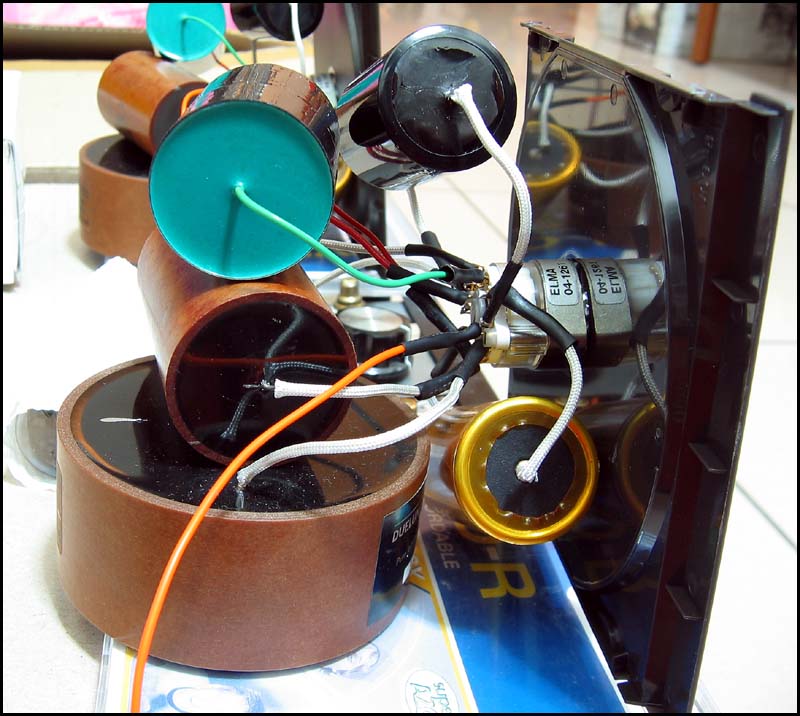Jupiter Beewax Paper HT Capacitor
While I have always liked the Juper Beewax capacitor’s sonics, the original version’s construction quality left a lot to be desired, especially its reported weakness in hot environments. It really did feel like a candlestick wrapped in paper and was not recommended to be used near hot tubes or resistors; however, its presentation was very pleasing and non-artificial, devoid of any plasticky signature or hype.
Fortunately, the Jupiter capacitor has been redesigned using a reinforced and improved beeswax paper as well as a non-drip casing rated for higher operating temperatures. The older version was not recommended for temperature greater than 110 F, but the new version is reported safe up to 176 F. In addition, all the new versions come with solid-silver leadout wires terminating the aluminum foil, whereas the older version came with either copper or silver wires. It really appears to be a completely new design, as one can see from the picture below of the old and new design in the same uF/voltage value.

The big question is, were they able to reduce the size and reinforce the construction, yet not lose any of the sonic charm of the original? I’m happy to report “yes” to that question along with some other observations. The old and new sound very, very similar, so much so it’s splitting hairs. Both still have a warm, dense, natural midrange with a lot of nice texturing and richness that’s not distant or cool. While not super-defined like teflons, the bass has that woody, unforced roundness many people seek for acoustic bass, and the overall gestalt builds the music from ground (bass) up. While those who love the treble presentation of teflons and polystyrenes may complain the Jupiter is not as sparkly and obviously airy, there is still a lot of treble information and detail present, especially up to mid-treble. Poor recordings that’s simply intolerable can find a measure of forgiveness with the Jupiter.
Is there any sonic difference with the new version? Well, it’s nothing to write home about, but the new version may have a touch smoother low-treble/upper-mids while the old version may be slightly more lively. While I do believe this smoother presentation in the upper-mids of the new version is due to more high treble extension, I would hesitate to bet any significant amount of money on anyone being able tell them apart reliably. Another confounding factor is that the old version I have has copper leadouts while the new ones all come with silver. It’s possible this alone could account for some of the perceived difference.
I have written before about how bypassing the old Jupiter with ERO KP1832 Polypropylene film and foil capacitor improves the hall ambience and air, and this still holds true for the new version. Listening closer this time, the improved upper harmonics also seems to make the bass appear tighter, which seems counter-intuitive but easily demonstrable by covering one’s tweeters and observing subjective loss of bass tightness. At any rate, Jupiter plus a good film and foil bypass remains one of my favorites for those who want a natural, earthy sound combined with detail.





























